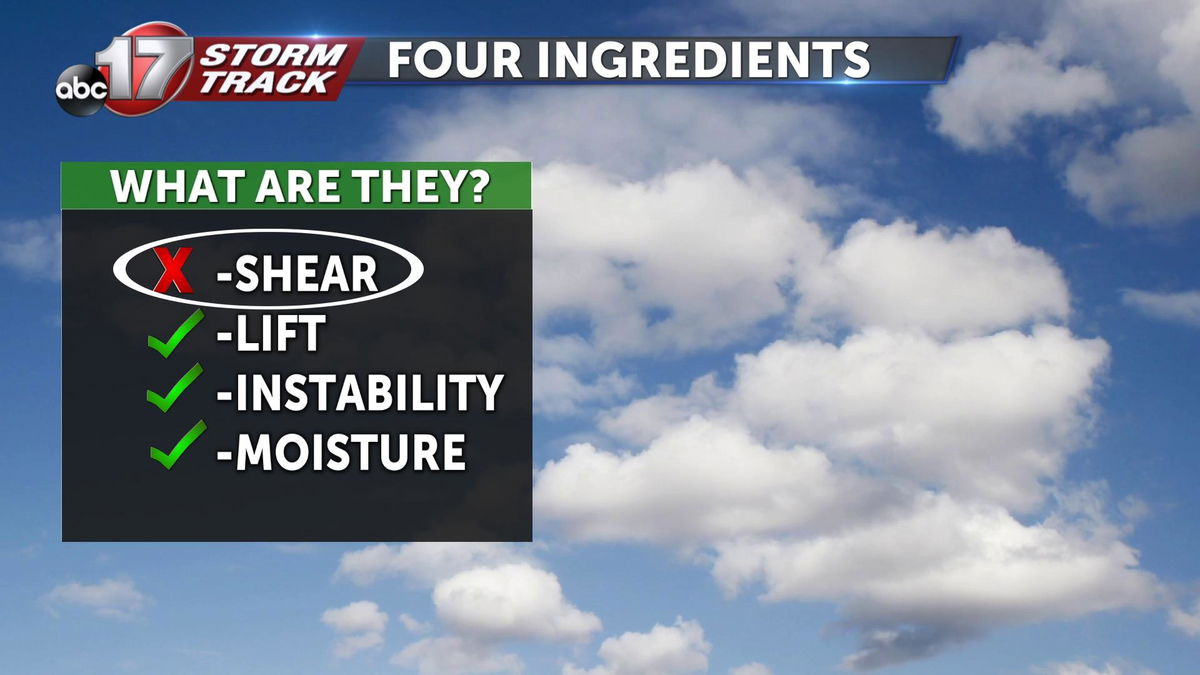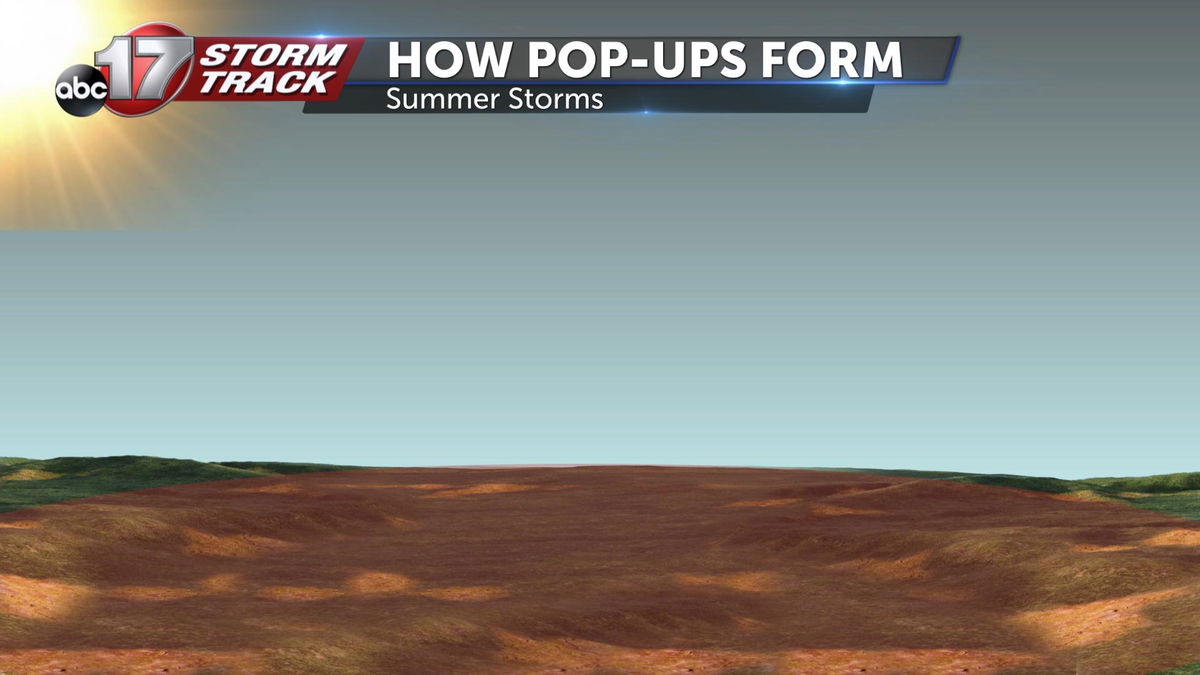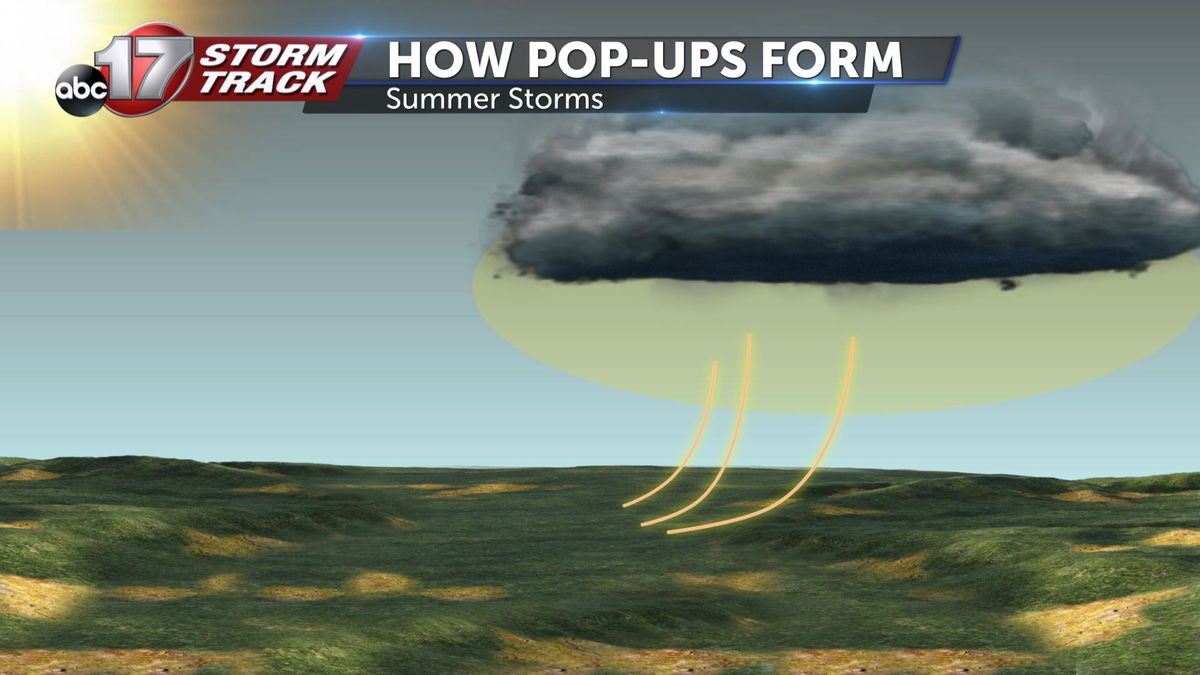How summertime pop-up storms form
Every summer Mid-Missouri sees afternoon pop-up storms during various afternoons. Even as early as this afternoon some areas to the south towards the Lake of the Ozark's could see some pop-up storms. These storms are different from other forms of storms based off of what causes them to fire off.

Typically, the four main ingredients to storm development rely on shear, lift, instability, and moisture. For summertime pop-up storms, there are three of the four ingredients minus shear.

During the morning and early afternoon hours, the sun heats up the surface of the earth.

This leads to a rising motion in the atmosphere which creates instability known as CAPE in the environment. CAPE stands for Convective Available Potential Energy. This is the energy in the environment that storms use to increase in strength. This paired with southerly flowing winds in the lower jet stream which carries moisture, causes the formation of storms.

When storms start to allow for rain and hail to drop out from itself, it leads to cooling air around the upper portions of the storm. This in turn creates a downdraft in the storm. Typical storms that have adequate amounts of wind shear allows the system to stay ahead of the downdraft. This means that the storm can continue for prolonged periods of time. With pop-up summertime storms, the lack of shear means that the downdraft falls back into the center of the storms core, killing the storm outright with its cool air. This leads to the short-term lifespan of these storms.
